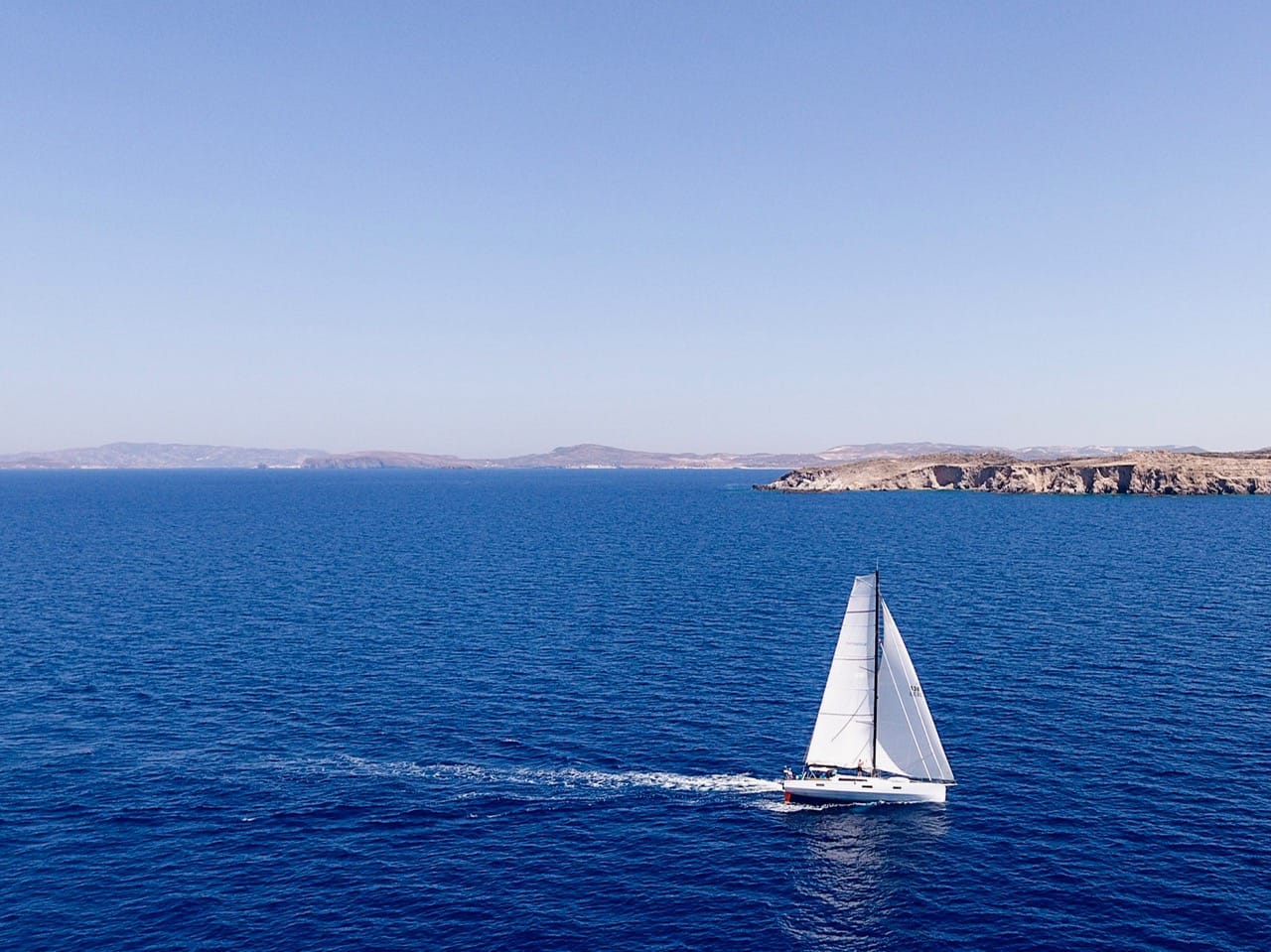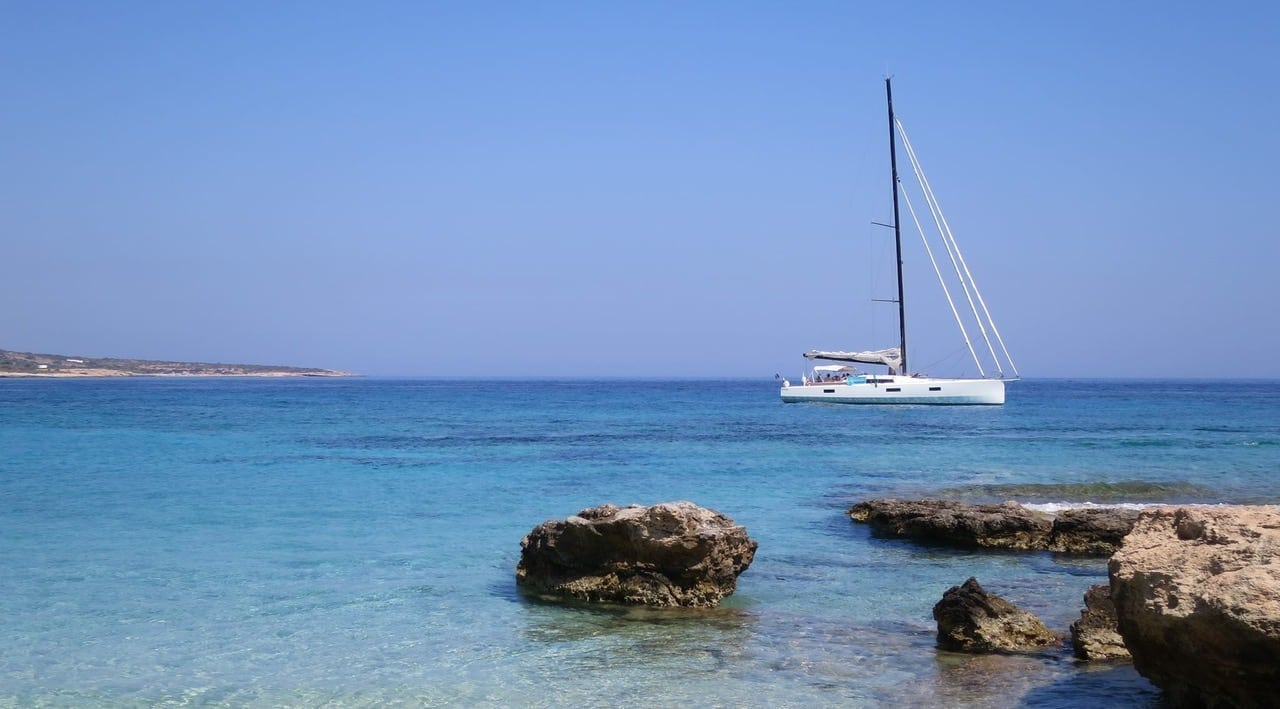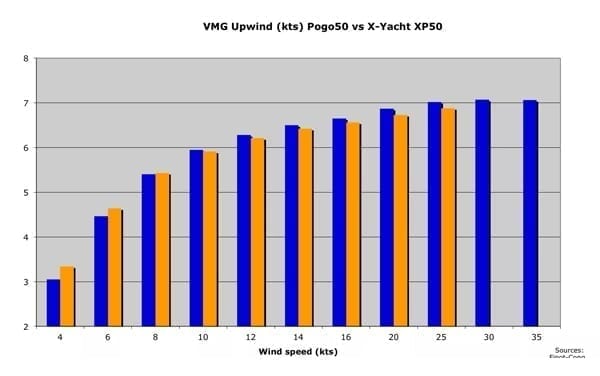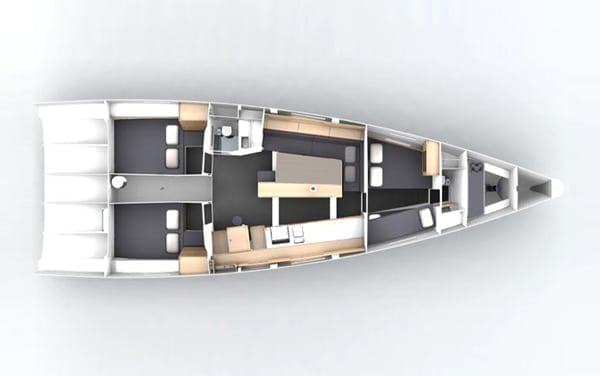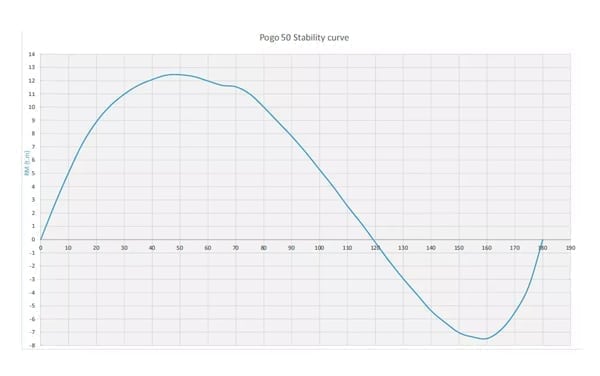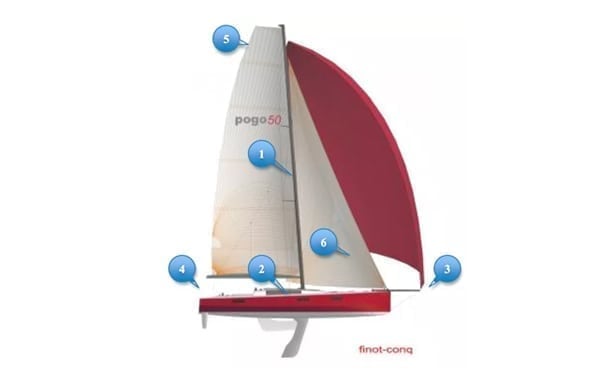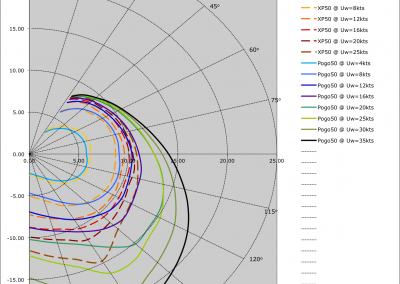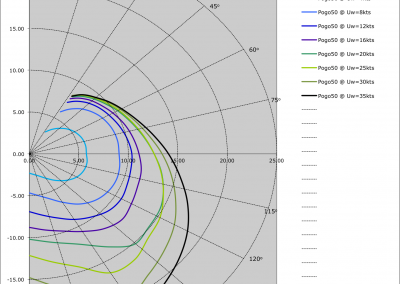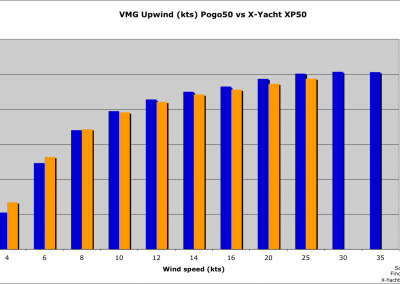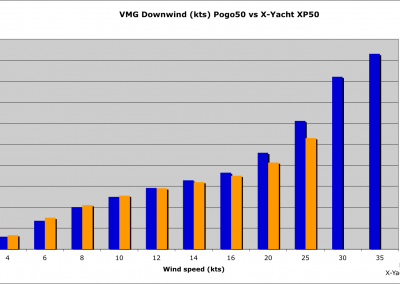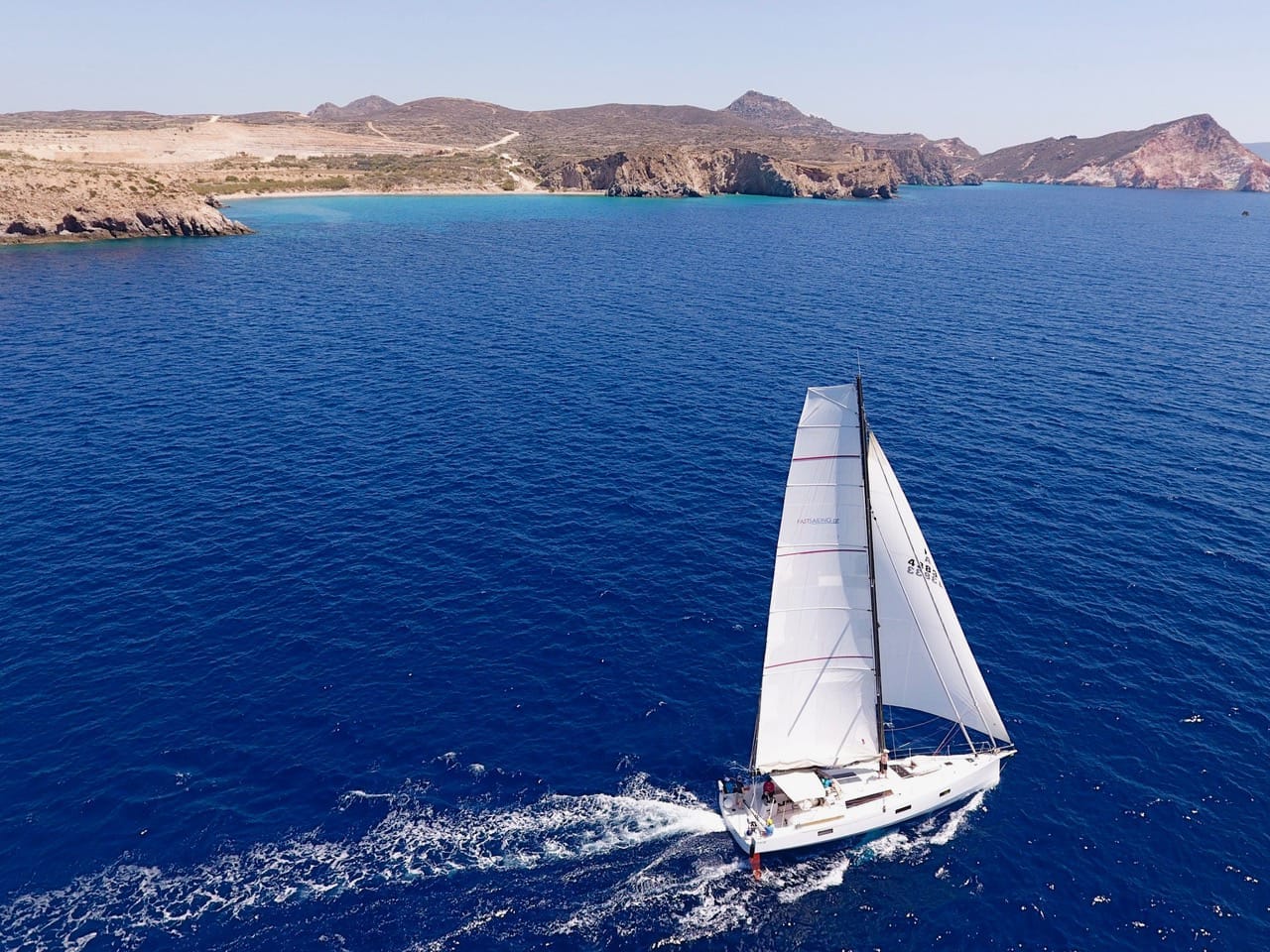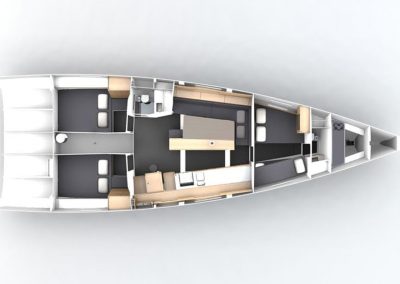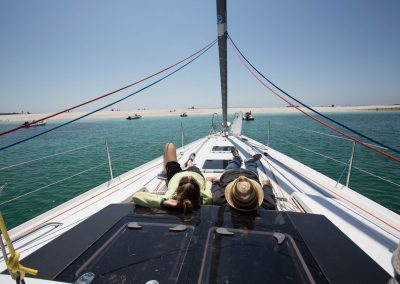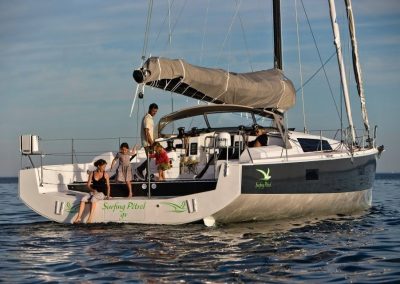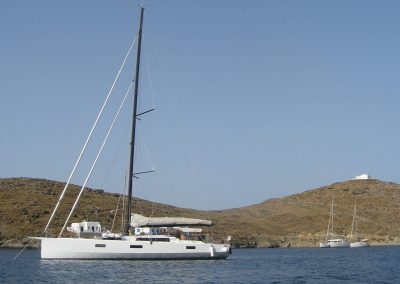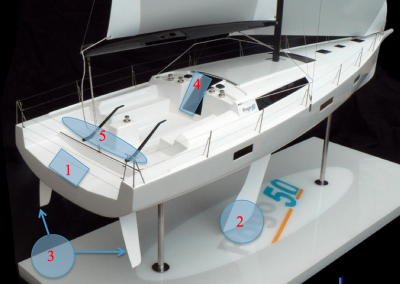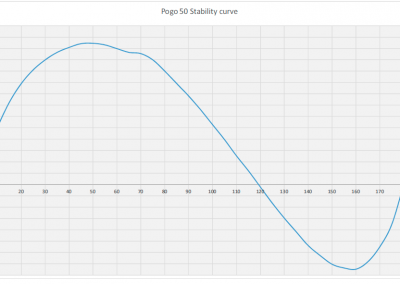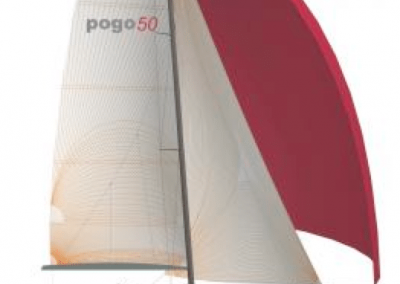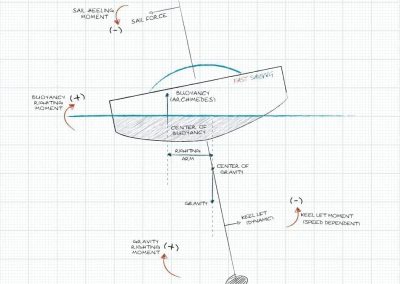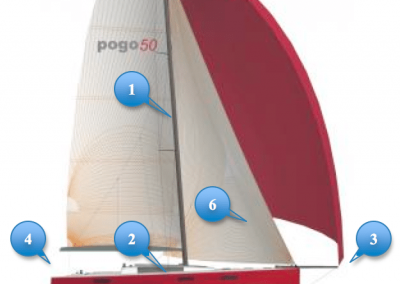Pogo 50. The Flagship
Pogo50: The sailboat most of us were dreaming of…a long range, super comfortable cruiser. And yet, exhilaratingly fast! The “story” has it that somebody dreamed of a 50 footer by Pogo and insisted until they would design and build one for him. A bold dream. Finot-Conq did the design and Pogo Structures is building this top yacht in France, blending oceanic racing and high end cruising. FastSailing’s Pogo50 has a custom interior and exterior design, adapted for your charter comfort.
Speed
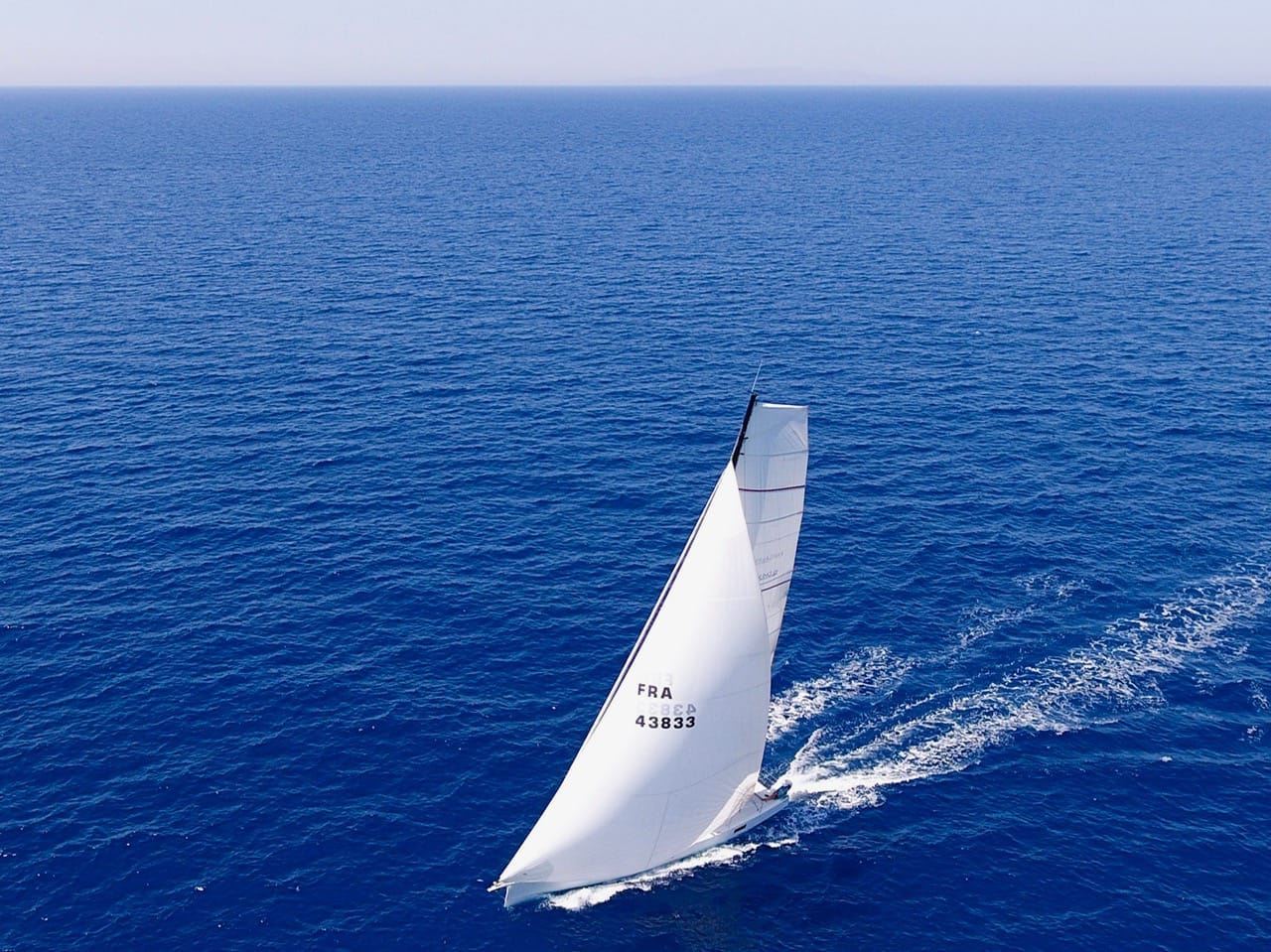
We are talking about a truly fast saiboat. Not another IRC/ORC “optimized” floating caravan… Enjoy gliding at 8… 10… 15 kts with ease, comfort and safety. In the 2012 ARC race, the Pogo50 came 2nd in real time shortly before a JP54 and at least half a day before everybody else! Their average speed over 2680miles was 12.64kts… This is how it is possible: Super powered:
- Sail area /Displacement 2/3 = 35.16 for upwind (D=8.9t, Upwind SA = 151m² )
- Sail area /Displacement 2/3 = 67.06 for downwind. (D=8.9t, Downwind SA=288 m²)
Optimized hull:
- Flat hull shape optimized for planing both upwind and downwind
- Pronounced rocker => minimal drag in light airs + bow up when sailing downwind in strong breeze
Check out the Crazy Polar Diagrams and VMG graphs. We like to see them compared to those of a serious fast cruiser, the X-yacht XP50:
- At TWS of 12kts, the Pogo50 is up to 1 kts faster…
- For TWS=4kts the XP50 is faster (but who sails at 4kts of wind speed?)
- for TWS= 8 – 10 kts they have equal upwind VMG,
- for TWS >12kts, the stronger it blows the more Pogo50 outperforms the XP50 in upwind VMG
- for TWS >10kts Pogo50s downwind VMG is always higher
- for TWS>25 the Pogo50 continues to glide over the waves at exhilarating speed
Certainly Polar Diagrams are theoretical predictions assuming certain “ideal” conditions (perfect trimming, sails’ conditions, steering etc). However, they do provide however a useful tool when it comes to comparing yachts. Double digit boat speed sensations are now for everybody!
Comfort
Interior and exterior comfort of a high level
- 2 double cabins,
- 1 family cabin with a double bed and 2 single beds,
- skipper’s cabin with separate entrance,
- 2 WC with shower, hot water,
- full kitchen, stove, fridge
- 5.15m large beam (!) and unobstructed cockpit,
- cockpit shower,
- low diving platform,
- electric mainsail winch,
- windlass
- cockpit table,
- bimini…
Safety
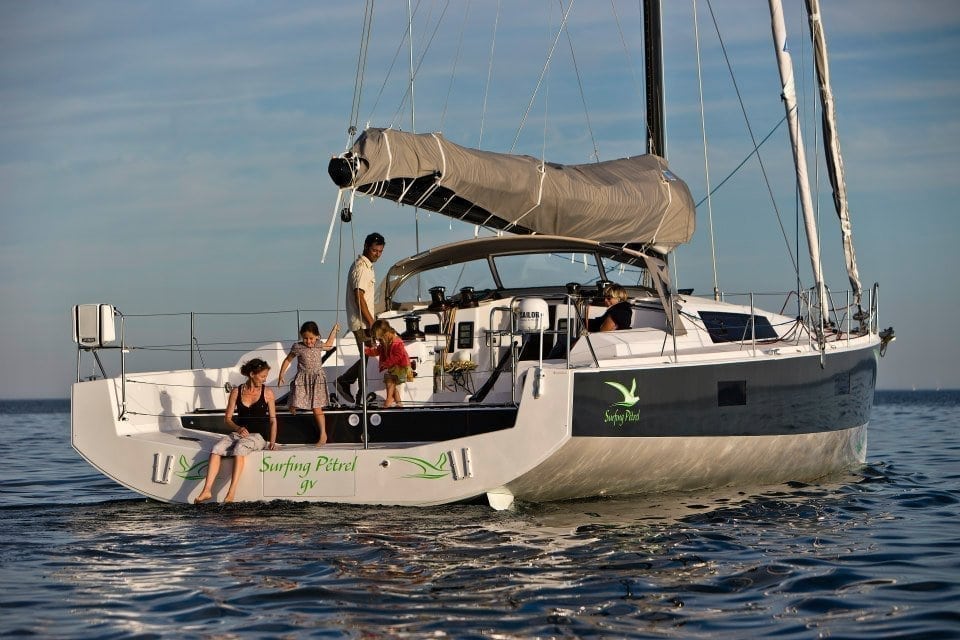
Absolute safety. Sail relaxed, feel and be safe at all times, no compromise on that! Safety comes from 5 basic characteristics: Robust structure, Stability, Unsinkability, Offshore design, Speed potential Robust structure:
- Hull reinforced both longitudinally and transversally
- All bulkheads are structurally integrated
- Extra reinforcement on highly stressed areas of hull and deck (winches, rudder pits, engine etc.)
- Keel pivots backwards to absorb a grounding shock
- Structures naval yard construction quality
Stability:
- Very low center of gravity – below the hull. ~3.0 out of the 3.2tons of total keel weight, located at the lowest part from -2m to -3.5m.
- Keel/Displacement ratio is at 3.2/8.9=36.0% (most cruising yachts have <30% , most racer/cruisers are rarely above 35%)
- Significant righting moment
- Form stability (5.15m beam compared to ~4.0m in conventional boats of similar length)
- 3.5m deep keel
- max righting moment of 12.5tm @ 65o or equivalently max righting arm of 1.41m (Most racer/cruisers are rarely above 0.8m…)
- AVS (angle of vanishing stability) = 120o
- Twin rudders inclined to leeward.
- Always a rudder fully submerged for control.
- Rudder stands ~vertical => no hydrodynamic lift => steering is always soft and responsive
- When downwind both the rudders in the water => extra stability.
- When upwind only one of the rudders remains submerged => reduced drag
Un-sinkability:
- Buoyancy foam below front and aft cabins
- Watertight aft and bow crash compartments
Offshore design:
- All controls and manoeuvres are cockpit lead.
- All winches are close to the cockpit’s central axis. The crew does not have to lean towards the yacht’s extremity for monoeuvring
- No permanently fixed table that can seriously hurt the crew during rough seas
- Banks protect from incoming waves
- Open aft section for immediate drainage in case a wave breaks into the cockpit.
- Watertight sliding door is not the classic detachable panel type, but always in place, and ready to be closed at any time
- Life-raft is stored permanently within the cockpit for immediate access and safe deployment in case of emergency
Speed: Being fast is an element of safety per se:
- reach shelter quickly
- escape from a weather front
pogo50 Safety Features
Life raft under cockpit floor for immediate access in case of emergency(1), Low center of gravity (2), Twin rudders for stability and control (3),Sliding watertight door (4), Open aft section for immediate drainage (5).
Technical Specifications
Pogo 50
| Hull, deck & rigging | |
| Length | 15.20m |
| Max beam | 5.15m |
| Draft | 3.5m/1.5m |
| Light displacement | 8.9t |
| Mast | Carbon |
| Boom | Aluminum/Carbon |
| Bowsprit | Carbon fixed |
| Steering system | Twin rudders, Tiller |
| Motor | Volvo Penta D1-60 HP |
| Propeller | 2-blade folding |
| Navigation Category ISO 12217 | A – unsinkable |
| Sailplan: | |
| Mainsail | Square top 88 m² |
| Genoa | 63 m² |
| Staysail on removable stay | 35m² |
| Asymmetric spinnaker A2 | 200 m² |
| Asymmetric spinnaker A5 | 120 m² |
| Gennaker/Code 0 | 120 m² |
| Interiors / Amenities | |
| double cabins | 2 |
| family cabin double bed + 2 side banks | 1 |
| single bed | 1+1 folding to double |
| skipper’s cabin +WC | |
| Kitchen | |
| WC with shower | 2 |

